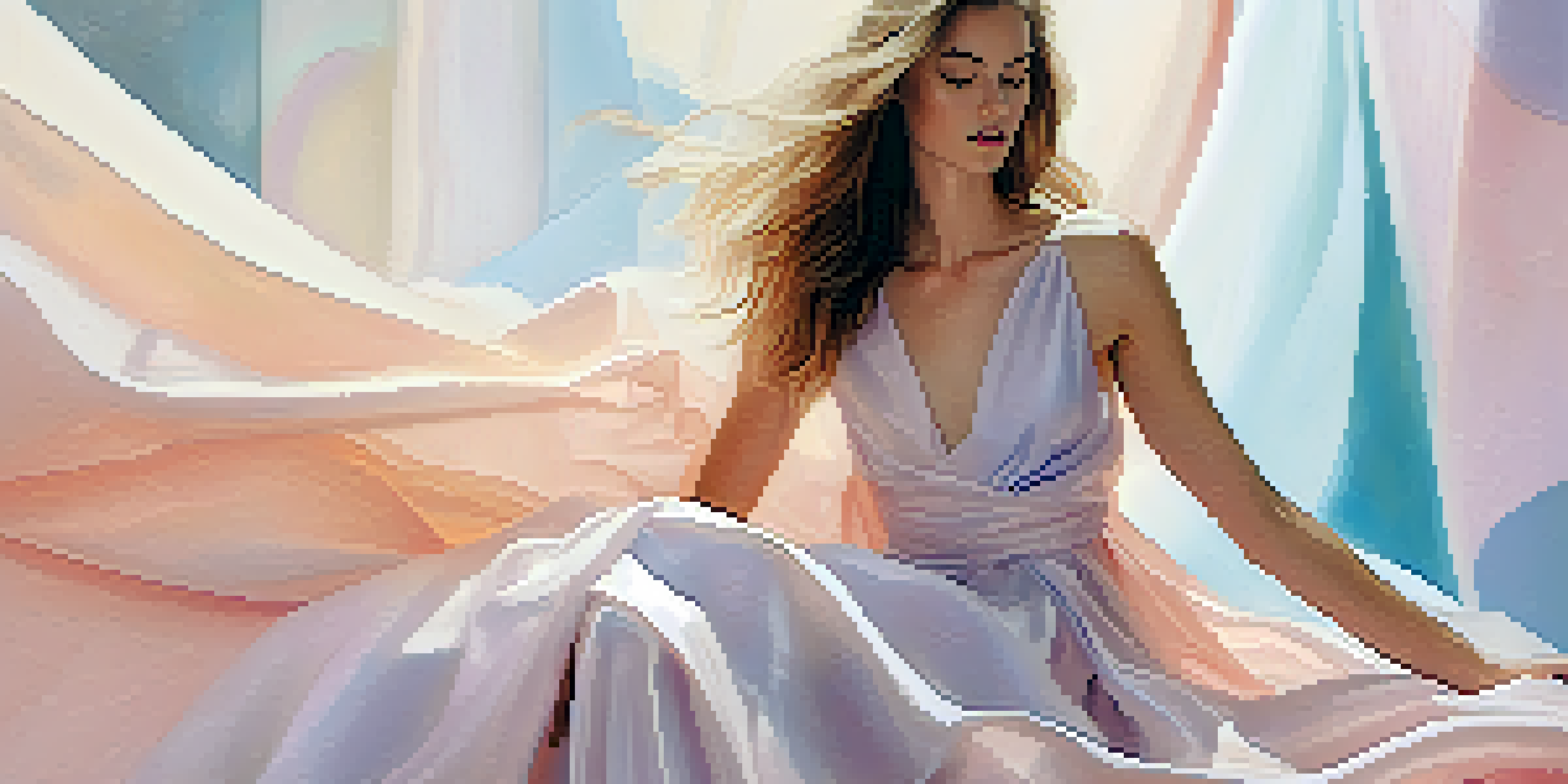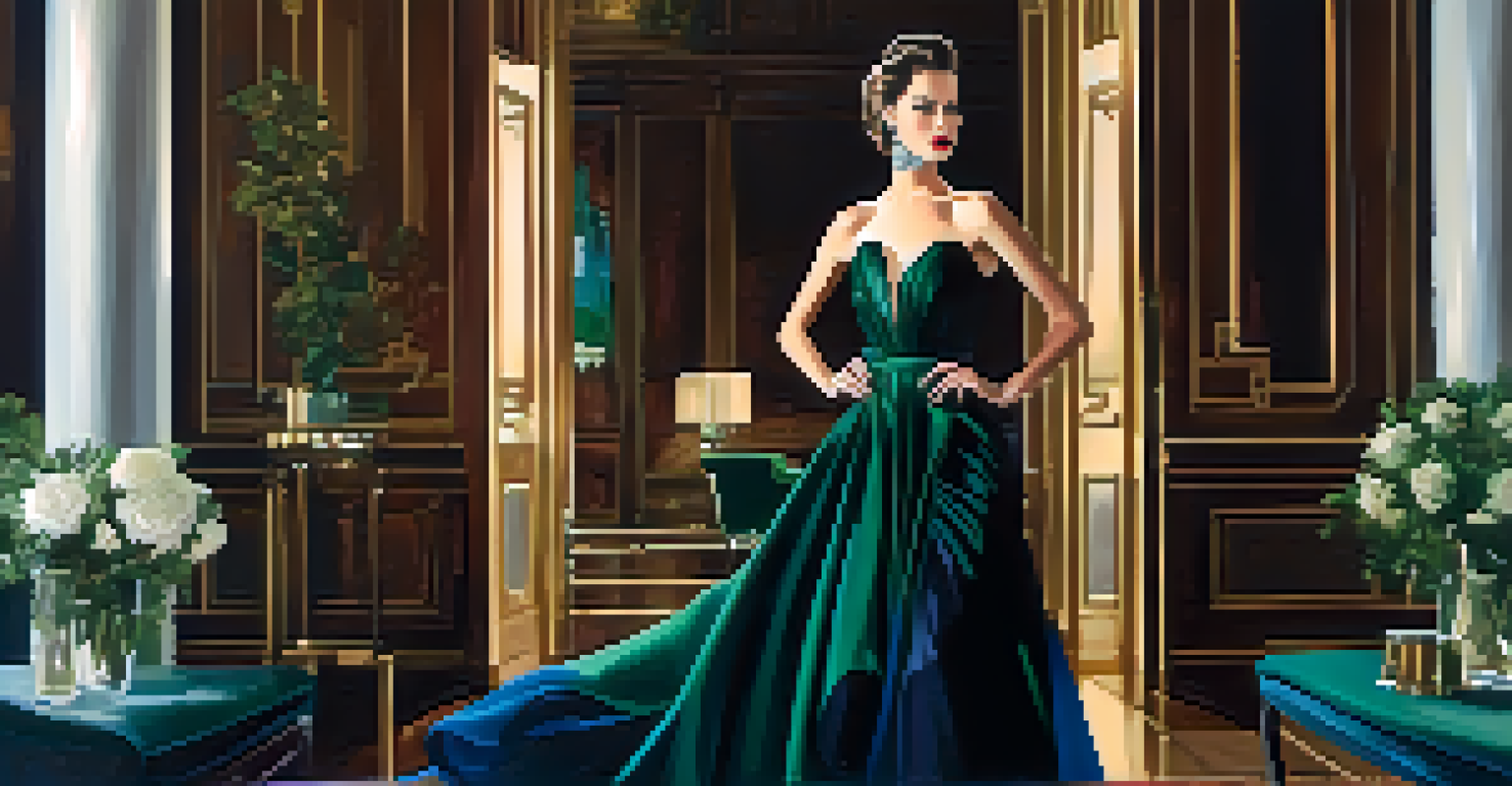The Role of Color in Fashion Illustration and Design

Understanding Color Theory in Fashion Illustration
Color theory is the foundation of color usage in fashion illustration. It involves the color wheel, which shows how colors relate to each other. By understanding primary, secondary, and tertiary colors, designers can create more harmonious and appealing illustrations.
Color is a power which directly influences the soul.
Fashion illustrators use color theory to evoke emotions and set moods. For instance, warm colors like red and orange can convey energy and passion, while cool colors such as blue and green might suggest calmness. This emotional connection can deeply engage an audience.
Moreover, color theory assists in making informed choices about color combinations. Utilizing complementary colors can create striking contrasts, while analogous colors offer a more subtle, cohesive look. This knowledge is crucial for presenting a designer's vision effectively.
The Psychological Effects of Color in Fashion
Colors can evoke specific feelings, making them powerful tools in fashion. For example, black often symbolizes elegance and sophistication, while yellow can evoke happiness and optimism. This psychological aspect of color is vital for fashion designers and illustrators to consider.

Understanding these psychological effects allows designers to communicate messages without words. A bright, vibrant color palette might suggest a youthful, playful vibe, while muted tones could imply seriousness and professionalism. This silent dialogue can significantly influence consumer perception.
Color Theory Enhances Design Appeal
Understanding color theory allows fashion illustrators to create harmonious and emotionally engaging illustrations.
Fashion brands often align their color choices with their identity. For instance, luxury brands may opt for deep jewel tones, while eco-friendly brands might use earthy hues. This strategic use of color helps reinforce brand values and connect with target audiences.
Color Trends and Their Evolution in Fashion
Color trends in fashion are ever-changing, influenced by various factors such as culture and technology. Each season, designers introduce new palettes that reflect societal moods and themes. Keeping an eye on these trends is crucial for anyone in the fashion industry.
Colors are the smiles of nature.
For example, the rise of minimalism saw a shift towards neutral and monochromatic palettes. In contrast, the past few years have witnessed a resurgence of bold colors, often inspired by vintage styles. This evolution keeps fashion fresh and exciting, allowing designers to experiment.
Fashion illustrators play a key role in showcasing these color trends. By incorporating trending colors into their work, they help set the tone for upcoming collections. This not only keeps their illustrations relevant but also aligns with the broader fashion narrative.
Cultural Significance of Colors in Fashion Design
Colors hold different meanings across cultures, making cultural awareness essential in fashion design. For instance, while white is often associated with purity in Western cultures, it signifies mourning in some Eastern cultures. Designers must navigate these cultural nuances carefully.
Incorporating culturally significant colors can enhance a designer's work and resonate with diverse audiences. For example, using red in a collection might celebrate a culture's festive spirit, while incorporating green could symbolize growth and renewal. This thoughtful approach enriches the design narrative.
Colors Impact Brand Identity
Strategic color choices in fashion branding can influence consumer perceptions and reinforce brand values.
Moreover, cultural colors can inspire trends and influence collections. Designers who draw inspiration from various cultures can create unique pieces that celebrate diversity. This not only broadens their appeal but also fosters inclusivity in fashion.
The Role of Color in Branding and Marketing
Color is a crucial element in branding and marketing strategies, especially in fashion. Brands use specific colors to create recognition and convey their identity. For instance, the iconic red of Valentino instantly evokes a sense of luxury and passion.
Effective use of color can significantly influence consumer behavior. Research shows that consumers make subconscious judgments about products within seconds based on color alone. This highlights the importance of choosing the right colors to attract the desired audience.
Fashion marketers often develop campaigns around color trends, using them to create visual appeal. A well-executed color scheme can enhance brand storytelling and make marketing materials more engaging. This strategic approach ensures that brands leave a lasting impression.
Color in Fashion Illustration Techniques
Fashion illustrators utilize various techniques to effectively incorporate color into their work. From watercolor to digital tools, each method offers unique advantages for color application. Understanding these techniques enhances the overall impact of an illustration.
For instance, watercolor allows for soft blends and transparency, creating a dreamy effect. On the other hand, digital illustration tools provide precision and the ability to experiment with vibrant colors easily. Each medium shapes how color is perceived in fashion illustrations.
Cultural Context Shapes Color Meaning
Colors carry different meanings across cultures, making cultural awareness essential in fashion design.
Illustrators also consider color layering and shading to add depth to their designs. By using gradients and highlights, they can create a three-dimensional look that brings their illustrations to life. This attention to detail is what sets exceptional fashion illustrations apart.
Case Studies of Iconic Fashion Color Palettes
Examining iconic fashion color palettes can provide valuable insights into the role of color in design. For example, the bold primary colors used by designer Mondrian inspired a significant movement in fashion. This palette not only made a statement but also reshaped how color could be perceived in clothing.
Another example is the soft pastels that defined the 1950s, reflecting a post-war optimism. Designers like Dior used these colors to create a sense of elegance and femininity, which resonated with the cultural zeitgeist of the time. Such historical palettes offer lessons in aligning color with societal trends.

These case studies illustrate how color can transcend mere aesthetics to become a form of storytelling in fashion. Understanding these historical contexts allows current designers and illustrators to innovate while respecting color's rich legacy in the industry.